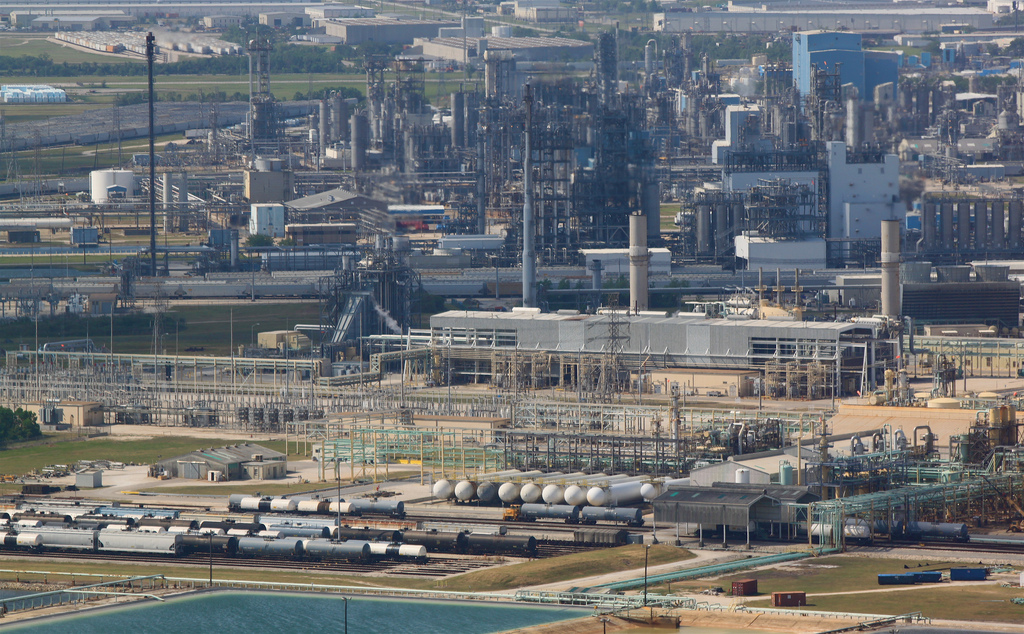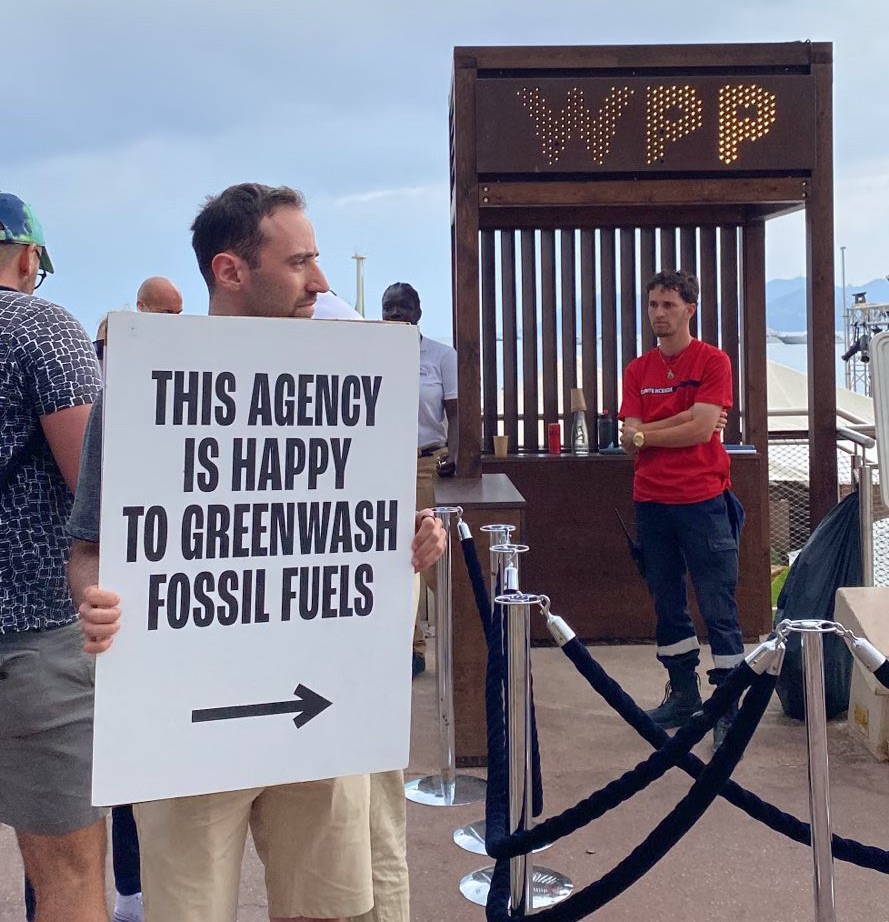On the heels of the shale gas rush that’s swept the U.S. for the past decade, another wave of fossil fuel-based projects is coming — a plastic and petrochemical manufacturing rush that environmentalists warn could make smog worse in communities already breathing air pollution from fracking, sicken workers, and expand the plastic trash gyres in the world’s oceans.
“Thanks to abundant supplies of natural gas, the U.S. chemical industry is investing in new facilities and expanded production capacity, which tends to attract downstream industries that rely on petrochemical products,” the American Chemistry Council’s President and CEO, Cal Dooley, said in a January press release. “As of this month, 281 chemical industry projects valued at $170 billion have been announced, about half of which are completed or under construction.”
A new Food and Water Watch report, How Fracking Supports the Plastic Industry, calls attention to the dark side of those plans, warning of air and water pollution and the risk to people’s health, especially for those taking jobs in the plastics industry.
The Pollution and Health Risks of Petrochemical Plants
“The petrochemical boom does more than generate plastic that is overfilling our landfills and spilling into the oceans; the manufacturing process itself releases numerous pollutants into our air, water and land,” the report finds. “On top of that, many of the proposed new ethane cracker projects are co-located with fracking and drilling operations, potentially compounding the pollution problems that residents already endure.”
Converting ethane, a by-product of shale gas drilling, to plastic requires ethane “crackers” — massive plants that use heat or steam to “crack” the ethane gas into ethylene, which is then converted to polyethylene, generally sold in plastic pellets.
Shell plans to start construction of one of the nation’s largest ethane crackers this year in Pennsylvania, home to the Marcellus shale drilling rush. “It is the first new facility of its type to be constructed outside of the Gulf Coast in two decades,” the report points out.
“Although the cracker plant will bring pollution to the region, the industry, its supporters and Pennsylvania Governor Tom Wolf all tout that it will bring jobs,” the report adds. “What they fail to mention is that these jobs are potentially dangerous and hazardous to health.”
Petrochemical plant workers suffer from higher rates of brain cancer than workers in other industry, the report says, noting that workers are exposed to known carcinogens and neurotoxins like benzene, toluene, and xylene and may have an elevated risk of liver disease and other ailments.
Emissions from petrochemical plants have also been linked to elevated levels of toxins in the blood of people living nearby. Allen LeBlanc, a resident of Mossville, Louisiana, with high levels of dioxin in his blood — which researchers traced to nearby petrochemical plants and refineries — described his disabling health problems to the Intercept in 2015.
“Living here has messed me up,” he said. “If I could have another life, I’d take it.”
In Louisiana, the Food and Water Watch report notes, 13 petrochemical plants released 4.9 million pounds of toxic materials into the environment in 2015, according to Environmental Protection Agency (EPA) records. But that’s nothing compared to Texas, where the state’s 28 petrochemical plants reported over 13.8 million pounds of toxic releases the same year to the EPA.
The air pollution from the plants can make breathing more difficult for people living nearby, the report adds, and increase their chances of developing cancer. “Several studies have demonstrated that people’s exposure to petrochemical facility pollutants is associated with heightened cancer risks, acute irritative symptoms (such as nausea and eye and throat irritation) and respiratory-related illnesses, especially for children,” the report says.
From Fracking Boom to Cracking Boom
The shale gas targeted by drillers is mostly made of methane gas — the fuel purchased by power plants and used for home heating and cooking, which is also a powerful greenhouse gas. However, what comes out of a gas well isn’t pure methane, but a blend that also includes chemicals like butane, propane, and ethane — and ethane is a key building block for plastics.
Since the shale rush began, U.S. ethane production numbers have soared, with the Energy Information Administration now projecting production of over 1.7 million barrels of ethane a day in 2018, up from less than a million barrels a day just five years earlier. North Dakota’s Bakken shale formation is so ethane-rich that leaks and venting from drilling and fracking there was responsible for a spike in ethane levels in the Earth’s atmosphere, researchers concluded last year.
Twenty new or expanded ethane cracker projects have been proposed since the shale rush started, the new Food and Water Watch report says.
“The proposed cracker projects could conceivably boost polyethylene production by as much as 50 percent, taking it to more than 42 billion pounds a year,” On Earth reported in 2014 — when just 10 new plants had been proposed. “That’s fully six pounds of this one particular form of plastic for every man, woman, and child on earth.”
The Glut of Cheap Plastic to Come
Cheap new plastic discourages recycling — which means more trash winds up in landfills or contaminating the seas. For years, scientists have warned that the world’s oceans are becoming a plastic soup, with ocean gyres where plastic and other debris build up (also known as “garbage patches”) covering a quarter of the earth’s surface. By 2050, the world’s oceans are predicted to contain more plastic than fish (by weight), an Ellen MacArthur Foundation report concluded last year.
“The fracking-driven industry expansion will likely generate even more ocean plastics as more ethane crackers come online and produce more plastic resins,” the Food and Water Watch report concludes.
Making all that plastic also creates enormous amounts of smog, the report points out. “In 1999, when Houston’s ozone levels were the highest in the nation, the state of Texas conducted several studies that found large industrial leaks,” the report notes. “The worst originated from cracker plants producing ethylene and propylene.”
“In addition to asthma, long-term exposure to smog has been connected to premature deaths in adults and to low birth weight in babies,” it adds.
That’s a particular problem in states that already suffer from smog problems. Shell’s ethane cracker will be built about 30 miles outside Pittsburgh, Pennsylvania. It’s projected to emit 522 tons of volatile organic compounds [VOCs] — precursors to smog — which would mean that it would be western Pennsylvania’s largest source of VOCs.
Nonetheless, Shell’s ethane cracker was granted multiple tax breaks — including the largest tax break in state history, worth $1.65 billion over 25 years — by state officials who argue that the economic benefits to the region make it all worthwhile. Shell predicts that the plant will employ 600 workers — a powerful message in a swing state where a thirst for job creation is often cited as a key reason that Donald Trump won Pennsylvania’s 20 electoral college votes in November.
For its part, Food and Water Watch argues that fracking has already harmed the state’s drinking water, air quality, and increased the speed of climate change. “The last thing that Pennsylvanians need is another way for the oil and gas industry to capitalize on shale at the expense of their health and well-being,” the report concludes.
Main image: Petrochemical complex, La Porte, Texas Credit: Roy Luck, CC BY 2.0
Subscribe to our newsletter
Stay up to date with DeSmog news and alerts







